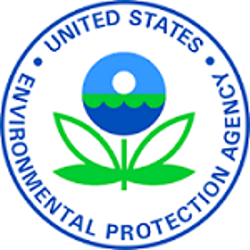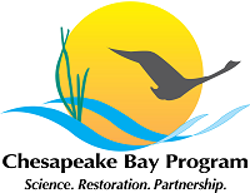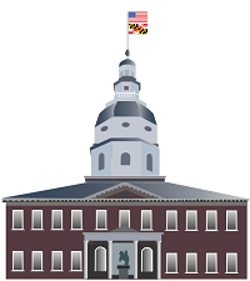 A sunset over Spa Creek displays the incredible natural beauty of the Chesapeake.
A sunset over Spa Creek displays the incredible natural beauty of the Chesapeake.
Image courtesy of Michael Miles - MDE.
Why Maryland is Cleaning the Chesapeake Bay
Economic and Social Benefits of a Healthy Bay
A healthy Chesapeake boosts the local economy, provides countless recreational opportunities, and improves the quality of life for Maryland citizens.
Learn More
There is an Ethical Obligation to Restore the Bay
A long-standing principle of environmental protection is that there is an ethical, or moral obligation to protect the environment. This notion stems from what is known as intrinsic value; the concept that the environment has value for existing; a value outside any attributes that benefit humans.
Additionally, the Chesapeake Bay is considered to be a uniquely special ecosystem in the United States that has immense economic, social, historical, and aesthetic value. Much like the Grand Canyon, the Everglades, or Yellowstone Park, the Chesapeake Bay is considered to be a national treasure. In other words, as a country, the United States has recognized these national treasures as being of such great importance to the country that they are to be protected and preserved for future generations to enjoy.

There is a Legal Obligation to Restore the Bay
Before the formation of the Environmental Protection Agency (EPA) in 1970, Congress recognized the need to establish laws to protect the natural national treasures of the U.S. from rampant pollution that was threatening to harm the environment irreparably. Thus, in 1940 the Federal Water Pollution Control Act was passed and was the first major U.S. law aimed at controlling water pollution. In 1972 significant amendments were adopted into legislation in response to growing public concern over clean and safe water. This 1972 amendment became commonly known as the Clean Water Act (CWA) (leaving MDE), and formally mandates Congress and the states to clean and restore the waters of the United States.
There is a provision in the Clean Water Act that details the restoration of the Chesapeake Bay under the direction of the Chesapeake Bay Program (SEC. 117 [33 U.S.C. 1267] Chesapeake Bay). Over the next several decades, additional legal agreements were made to improve Bay restoration and ensure continuous progress towards cleanup efforts.
A Collaborative Cleanup Effort
The Foundations of Coordinated Bay Restoration

In the late 1970s, U.S. Senator Charles “Mac” Mathias (R-Md.) sponsored a Congressionally funded $27 million, five-year study (PDF - Leaving MDE) that identified excess nutrient pollution as the leading cause of Chesapeake Bay degradation. To combat nutrient pollution, Maryland, Virginia, Pennsylvania, and the District of Columbia signed the 1983 Chesapeake Bay Agreement (PDF - leaving MDE) and formed a regional partnership.
While the first signing of the original Chesapeake Bay Agreement was only a simple pledge, it served as a foundation for future restoration efforts. The 1983 Chesapeake Bay Agreement was the first document officially recognizing the need for a coordinated approach to Bay restoration and formed the Chesapeake Executive Council (leaving MDE) and the Chesapeake Bay Program (leaving MDE) to lead the partnership. This coordinated approach to Bay restoration has seen great success and expanded to include all the states in the Chesapeake’s watershed, including Delaware, New York, and West Virginia.
The 1987 Chesapeake Bay Agreement Sets Numeric Goals
Building on the prior Bay Agreement, a new Chesapeake Bay Agreement was signed in 1987 (PDF - leaving MDE) and set the first numeric pollution goals to restore the Bay. The setting of numeric pollution targets marks a pivotal moment in Bay restoration history, as agreeing to numeric goals with deadlines was unheard of at this time. This practice of setting numeric goals with specific deadlines has since formed the backbone of Bay restoration and ultimately paved the way for the Chesapeake Bay Cleanup Plan.
 The Governor's Chesapeake Bay Cabinet is composed of staff from the State agencies responsible for Bay restoration.
The Governor's Chesapeake Bay Cabinet is composed of staff from the State agencies responsible for Bay restoration.
Maryland's Chesapeake Bay Cabinet Guides Chesapeake Bay Restoration
Since its inception in 1985, the Governor's Council on the Chesapeake Bay, also known as the Governor's Chesapeake Bay Cabinet, has guided Bay restoration in Maryland. The Bay Cabinet (leaving MDE) is composed of senior staff from Maryland Department of the Environment, Maryland Department of Natural Resources (leaving MDE), Maryland Department of Planning (leaving MDE), and Maryland Department of Agriculture (leaving MDE). These staff from Maryland's leading Bay cleanup programs work to assist the Governor in making important policy decisions on the Chesapeake by providing guidance and counsel on Bay-related issues.
How is Maryland Doing with Bay Cleanup?
Maryland tracks and documents Bay cleanup to demonstrate progress towards Bay Cleanup Plan goals.
Learn more about Maryland's Bay cleanup progress.
The Unique Roles of Government in Bay Restoration
Chesapeake Bay restoration is a highly complex task that requires the involvement of multiple states and hundreds of local governments. To ensure cleanup progress, federal, state, and local governments must all closely coordinate with each other.
Each level of government plays a vital role in Bay restoration and has different obligations they must perform. Without the close cooperation between various levels of government, Bay restoration would not be possible.
 The Federal government works with States to coordinate restoration.
The Federal government works with States to coordinate restoration.
Federal Government:
EPA Main Offices, Chesapeake Bay Program
Federal Responsibilities
-
Coordinate Bay restoration between states
-
Set federal pollution limits to be achieved by states
-
Provide guidance for achieving pollution limits
-
Fund Bay cleanup by providing grant money to states for distribution
- Determine any additional actions based on progress reports from the states
 The State government works to support local cleanup efforts.
The State government works to support local cleanup efforts.
State Governments:
Delaware, Maryland, New York, Pennsylvania, Virginia, West Virginia, and the District of Columbia
State Responsibilities
-
Coordinate Bay restoration between local governments
-
Set local pollution limits to be achieved by local governments
- Collaborate with local governments to develop strategies for achieving pollution limits
-
Distribute grants to local governments for pollution reduction measures
-
Assist local governments with reporting cleanup progress
- Report restoration progress to the federal government
 Local governments work directly to implement pollution reduction measures.
Local governments work directly to implement pollution reduction measures.
Local Governments:
County, City, and other Local Governments
Local Responsibilities
-
Coordinate with the State government to achieve pollution reduction
-
Create plans to make the required pollution reductions set by the state
-
Work with local contractors to implement pollution reduction controls
-
Report restoration progress to the state
- Use integrated infrastructure projects to benefit both the local community while simultaneously meeting Bay cleanup obligations.
Renewed Commitment to Chesapeake Bay Cleanup
Why do we Need to Reduce Nutrients?
Excess nutrient pollution from humans has caused extensive damage to the Chesapeake, resulting in the loss of wildlife and weakened the Bay's ability to protect itself from further harm.
These excess nutrients negatively affect our environment, economy, and quality of life.
Learn More
The Chesapeake Bay Cleanup Plan is Formed
By the mid-2000s it was becoming clear that the voluntary cleanup efforts of the current Bay Agreement were not enough to drive meaningful Bay restoration. In response to sluggish cleanup progress, and as required under the Clean Water Act, the EPA created the Chesapeake Bay Total Maximum Daily Load (TMDL) (leaving MDE). The total maximum daily load is a scientific measure of the total amount of pollution the Chesapeake Bay can receive while remaining vibrant and maintaining State water quality standards. To ensure restoration moved forward at a reasonable pace, the EPA set a 2025 deadline for the Bay jurisdictions to meet the Bay TMDL.
To avoid the pitfalls of past restoration efforts and promote continuous cleanup progress, the Bay jurisdictions developed short-term goals called milestones (leaving MDE). By setting and meeting goals every two years, the Bay jurisdictions ascertained progress was happening at a pace that would allow them to achieve their TMDL no later than 2025.
The 2014 Chesapeake Bay Agreement
In 2014, Maryland and the other Bay jurisdictions reaffirmed their commitment to Chesapeake Bay restoration and recognized additional measures needed to guarantee the continuing success for Bay cleanup. The 2014 Chesapeake Bay Watershed Agreement (PDF - leaving MDE) was signed by the leadership of the Bay jurisdictions and recognized both climate change and toxic contamination as challenges to restoring the Chesapeake.
Learn more about the Chesapeake Bay Watershed Agreement (leaving MDE).
Bay Restoration is a Continuous Process
Get Involved!
Are you a homeowner, business owner, faith community leader, or just someone who wants to help restore the Chesapeake Bay? If so, you are one of MDE's non-government partners and a vital part of our Bay cleanup efforts.
Learn More
Investing in Chesapeake Bay Cleanup
Cleanup efforts in the Chesapeake Bay are a direct investment in Maryland’s future (leaving MDE). Much like your home, the Chesapeake requires continuous cleanup to stay free from pollution. Continuing cleanup efforts secure past investments made in Bay restoration and benefit the local economy.
A series of measures must occur after Bay cleanup goals are achieved to ensure Bay health does not decline, and nutrients do not exceed the Chesapeake Bay TMDL to safeguard Maryland's investment in the Chesapeake.
What Comes Next?
The Chesapeake watershed has experienced a population boom since the 1950s, increasing from an estimated 8.4 million people in 1950 to about 18.5 million people in 2015. By 2040 it is projected that there will be an additional 3 million inhabitants (Leaving MDE) living in the Chesapeake’s watershed.
With population growth comes increased development, land use, and nutrient pollution (Leaving MDE). Additional steps must be taken to balance this increase and further reduce excess nutrients. As a result, most future restoration efforts will focus on the use of BMPs to reduce pollution from a growing population and new development.
Pollution on the Individual Level: Pea Sized Pollution Impacts the Bay
 Pollution as small as a pea can majorly impact the Bay.
Pollution as small as a pea can majorly impact the Bay.
To demonstrate the impact an individual can have on Bay restoration, consider the following; if each person in the Chesapeake Bay watershed were to reduce their nitrogen pollution to the Bay by 0.013 ounces (about the weight of a pea), Maryland would meet its nitrogen Bay cleanup goal with about 2 million pounds to spare.
In fact, if one person pollutes the Bay each day with 0.013 ounces of nitrogen each day (about the weight of a pea), this totals to 4.6 ounces of pollution over the course of a year (about the weight of a baseball). While this is still insignificant when compared to the size of the Bay, the cumulative effect is substantial. If all 18.5 million people in the watershed were to contribute that same 0.013 ounces of nitrogen per day, it would total to a staggering 5.3 million pounds of nitrogen per year.
While the above example is an oversimplification of how pollution it enters the Bay, it illustrates the profound impact that even seemingly insignificant amounts of unregulated pollution can have on Bay restoration. Consequently, it also shows how our actions affect the Bay and the vital need to make individual efforts to reduce pollution and improve the health of our streams and rivers.
Up Next: Maryland's Plan to Clean the Bay
Maryland's Bay Cleanup Plan consists of a pollution limit known as a Total Maximum Daily Load (TMDL) and the required steps and procedures needed to achieve the TMDL by 2025.
Learn more about Maryland's Chesapeake Bay Cleanup Plan.
Contact Information